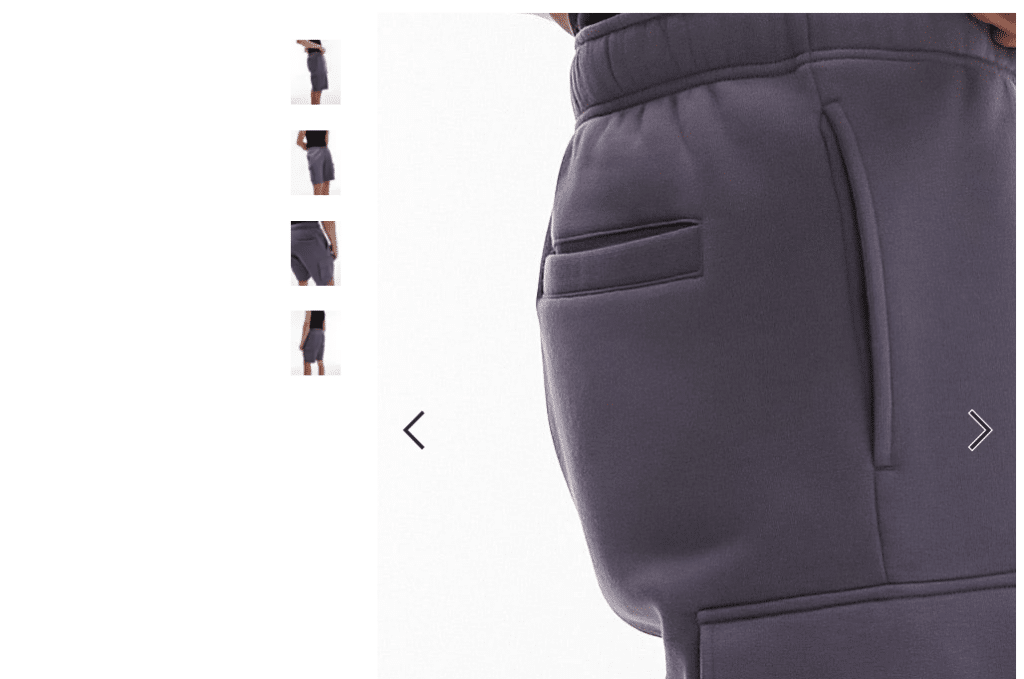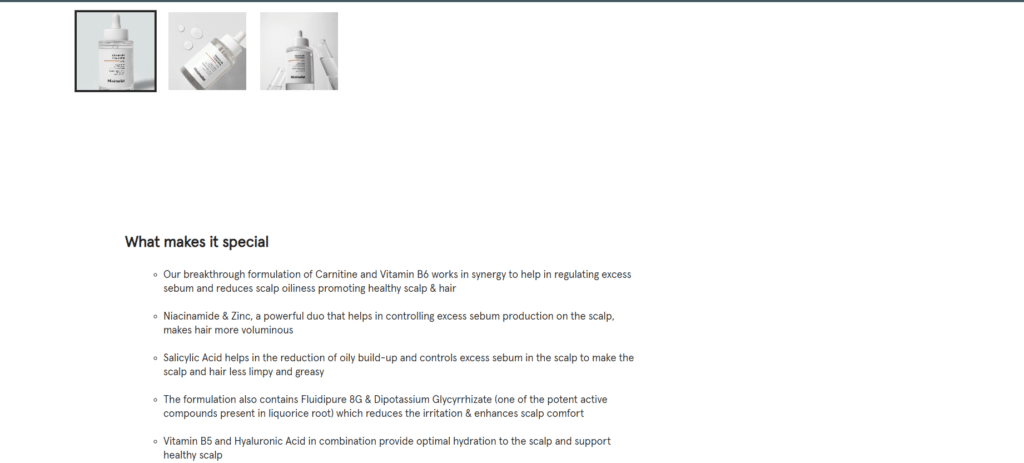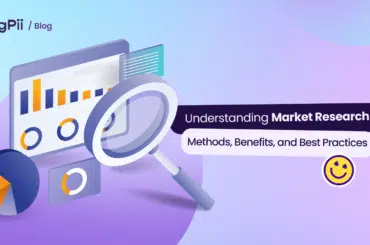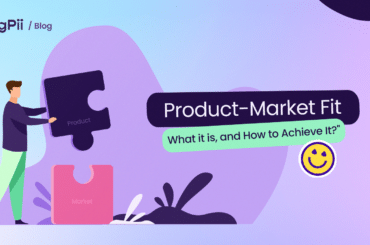Imagine you’re setting up a little shop in a bustling marketplace, and you have a fantastic range of products that you’re excited to share with potential customers.
However, in this marketplace, other shops are also vying for attention. To stand out and attract customers to your shop, you must showcase your products in the most appealing way possible., right?
In this scenario, your ‘product pages’ are like the windows of your shop facing the marketplace. Just as a well-dressed window can draw in passersby, an optimized product page can attract online shoppers.
This involves carefully selecting the right images to display your products, crafting compelling product descriptions that convey their value, and featuring reviews from satisfied customers, among other things.
What is Product Page Optimization
Product page optimization is the process of improving and enhancing your online product page’s content, design, and functionality to maximize its effectiveness in driving conversions, sales, and user satisfaction.
Just as physical store retailers arrange their products to captivate shoppers, ecommerce business owners must structure their product pages to capture the attention of online visitors.
This process goes beyond mere aesthetics; it’s about crafting an experience that seamlessly guides visitors from curiosity to conversion.
Optimizing Product Images
When it comes to online shopping, the adage “a picture is worth a thousand words” couldn’t be more accurate. In this section, we’ll explore how to optimize your product images to create a visual impact that resonates with your customers.
How to optimize product images
-
Use Clear, high-resolution images.
Clear and high-resolution images are non-negotiable. They allow customers to thoroughly examine your products to an extent that can convince them to make a purchase decision.
Whether it’s the intricate stitching on a garment or the texture of a handcrafted item, high-quality images ensure that customers can make informed decisions based on accurate representations.
-
Consistency and Branding
Consistency is key when it comes to visual branding. Your product images should reflect a cohesive style that aligns with your brand identity.
Consider incorporating subtle brand elements, such as logos or watermarks, into your product images. This reinforces your brand’s presence and can deter unauthorized use of your images by competitors.
-
Multiple Views and Image Zoom Functionality
Online shoppers can’t physically touch or hold your products, but you can bridge that gap with multiple views and image zoom functionality.
Providing multiple views allows customers to examine products from all angles, simulating the experience of picking up an item and inspecting it in-store.
Enabling image zoom functionality allows users to zoom in on specific parts of an image, providing an up-close look at intricate details.
Crafting Compelling Product Descriptions.
Your product images catch the eye, but your descriptions engage the mind.
A well-crafted description goes beyond merely listing features; it paints a vivid picture of how the product fits into the customer’s life.
How to craft compelling product descriptions
-
Clear and Concise Language
Effective communication begins with clarity. When crafting product descriptions, use straightforward language your target audience can easily understand.
The goal is to bridge the gap between your product’s features and your customers’ desires.
-
Highlight Benefits and Features
Focusing on how the product solves customers’ problems. Connect the dots between the product’s features and how they address common challenges or desires your customers might have.
For example, if you’re selling a skincare product, emphasize how it can alleviate specific skin concerns. While benefits are crucial, features also play a role in convincing customers of a product’s value.
Include a concise list of key features that make your product unique. These features could be technical specifications, materials used, or innovative design elements.
-
Utilize Formatting
In the fast-paced world of online browsing, readability is essential. Proper formatting can make your product description easily scannable and accessible to users.
Leveraging Customer Reviews
In ecommerce, customer reviews wield a unique power – the power of social proof.
As potential buyers scroll through your product pages, the opinions of those who’ve already experienced your products can significantly influence their decisions.
How to leverage customer reviews
-
Encouraging Customer Feedback
Customer reviews offer a peek into the real-world experiences of those who’ve interacted with your products. This collective voice can be a game-changer for your online business.
Also, after a customer makes a purchase, consider sending a follow-up email inviting them to share their thoughts. Include a link that takes them to the product page for easy review submission. Express your appreciation for their feedback and its role in improving your offerings.
-
Displaying Reviews Effectively
Customer reviews are most impactful when displayed strategically on your product pages. Position these reviews prominently, and ensure they’re visible without extensive scrolling.
Additionally, star ratings provide an at-a-glance indication of a product’s overall customer satisfaction. Accompany these ratings with summary snippets – concise extracts that capture the essence of the most positive reviews.
-
Responding to Reviews
Negative reviews are a chance to showcase your professionalism and dedication to resolving issues. Respond promptly, acknowledge the customer’s concerns, and offer a solution.
Even if you can’t change their experience, your response demonstrates that you value feedback and are committed to improvement.
In the case of positive reviews, a simple “thank you” goes a long way. Respond to positive reviews with gratitude, showing customers their feedback doesn’t go unnoticed.
Internally Linking Similar Products
Just as that well-organized store around the corner leads you from one aisle to another, internal linking guides online visitors through your ecommerce store.
-
Connect related products for cross-selling.
Internal linking isn’t just about navigation; it’s also a powerful tool for cross-selling. When customers are interested in a particular product, offering them related or complementary items can increase their purchase value.
When you link related products within your descriptions or on the product page, you create a seamless shopping experience.
For instance, if a customer is considering a camera, including links to compatible lenses, memory cards, and carrying cases can spark additional purchases.
-
Link to relevant blog posts and resources.
Your online shop can offer more than just products; it can be a valuable resource hub. If your website features a blog or informative articles, strategically link to them from your product pages.
For example, consider linking to articles about effective workout routines or nutrition tips if you’re selling fitness gear. This enhances the user experience by providing additional information and positions your brand as an authority in your niche.
User Experience
User experience (UX) is vital to a successful ecommerce store. A seamless, intuitive experience ensures visitors explore your product pages and become satisfied customers.
To create a positive user experience, consider these factors.
-
Optimize images for faster load times.
High-quality images are essential, but they shouldn’t compromise page speed. Compress images to a reasonable size without sacrificing quality.
-
Mobile Responsiveness
Your product pages should adapt seamlessly to different screen sizes, providing an optimal experience on smartphones and tablets.
Tablet view

Continuous Improvement
The journey of optimizing your product pages doesn’t end with the initial setup. Continuous improvement is essential to stay at the forefront of the ever-evolving ecommerce landscape.
Let’s explore how running A/B tests and using data-driven insights can lead to ongoing improvements.
-
Run A/B Tests
In the case of product page optimization, A/B test aims to ascertain which iteration of a page yields the highest conversion rate. Don’t assume you know what customers want when changing your product pages.
Create different variations of the page and run A/B tests with your audience to come to an informed conclusion.
-
Track Engagement Metrics based on changes made.
Utilize analytics tools to track key metrics such as click-through rates, time spent on page, and conversion rates. These metrics reveal which elements of your product pages are resonating with visitors and which might be causing friction.
-
Adjusting strategies based on data insights.
The data you gather isn’t just numbers; it’s a roadmap for improvement. If you notice that certain products have a high bounce rate, dig deeper to uncover the root cause.
Importance of Ecommerce Product Page Optimization
- Enhanced User Experience Tailored to Shoppers: Optimized product pages provide a tailored user experience. When you showcase relevant product information, images, and reviews, you’re catering to the specific needs and preferences of your potential customers.
- Reduced Returns and Customer Service Inquiries: When product pages are well-optimized with comprehensive information and clear images, shoppers are less likely to purchase the wrong product. This leads to a decrease in product returns and customer service inquiries, saving both time and money for your business.
- Improved Cross-Selling and Upselling Opportunities: Well-optimized product pages often include sections for related or complementary products. Strategically placing these items and providing persuasive descriptions can increase the chances of cross-selling and upselling, ultimately boosting the average order value.
- Better Search Engine Visibility: Search engines like Google reward well-optimized product pages with higher rankings. When your product pages are properly structured with relevant keywords, meta tags, and schema markup, they are more likely to appear in search results, increasing your organic traffic and visibility.
- Competitive Advantage: In a crowded eCommerce landscape, optimized product pages can set you apart from competitors. They convey professionalism, trustworthiness, and attention to detail. This can make the difference in convincing hesitant shoppers to choose your products over those of your competitors.
Conclusion
Integrating high-quality product images, crafting engaging product titles and descriptions, and showcasing customer reviews can create a product page that resonates with your customers and drives conversion.
Product Page Optimization FAQ
What are the key elements of an optimized ecommerce product page
An optimized eCommerce product page should include:
- High-quality images that showcase the product from multiple angles.
- Clear and concise product descriptions with essential details.
- A visible and compelling call-to-action (CTA) for quick purchases.
- Customer reviews and ratings to build trust.
- Pricing information and any applicable discounts.
- Cross-sell or upsell options.
What should be included in a product description?
A product description should be informative, persuasive, and SEO-friendly. Include details like:
- Product specifications and features.
- Benefits and how it solves a problem.
- Usage tips or application ideas.
- Unique selling points that differentiate it from competitors.
What are some common mistakes to avoid when optimizing product pages?
- Using low-quality images or not offering multiple views.
- Providing vague or incomplete product descriptions.
- Overloading the page with distracting elements.
- Neglecting mobile responsiveness.
- Ignoring search engine optimization for product titles and descriptions.
What tools and platforms can help streamline the eCommerce product page optimization process?
Several tools and platforms can simplify optimization efforts:
- Google Analytics: For tracking user behavior.
- A/B testing tools: Like Optimizely, FigPii, or VWO for experimentation.
- Content management systems (CMS): Such as Shopify or WordPress with eCommerce plugins.
- SEO tools: SEMrush or Moz for keyword research and optimization.










